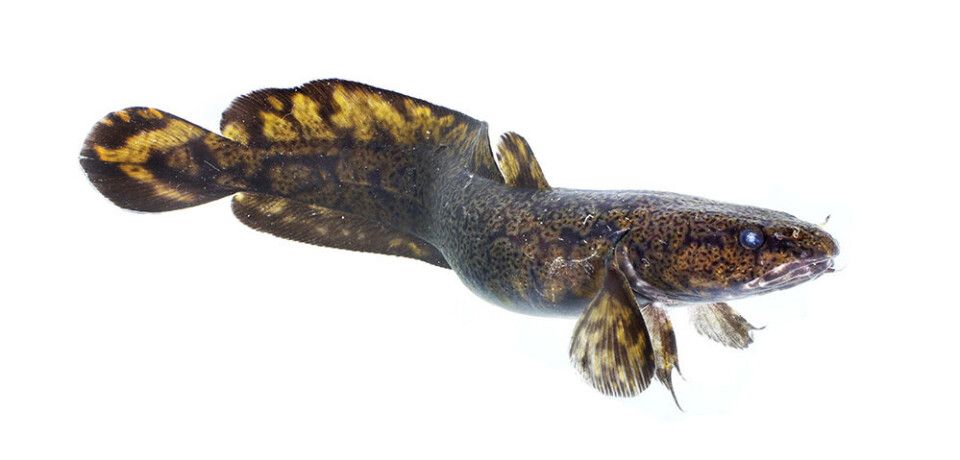This article is produced and financed by NTNU Norwegian University of Science and Technology - read more

Clean water eliminated effects of discharged drugs in fish
The discharge of pharmaceutical drugs is a major problem around the world, but a new study of the freshwater fish burbot shows that there is hope.
The development of new drugs is a good thing for both humans and animals. But unfortunately, the medications we take can have untoward consequences.
Discharges of medications by the pharmaceutical industry, and our own use of them, result in detectable traces of drugs that find their way into the soil, surface waters and groundwater all around the world.
These pollutants impact wildlife. Several studies have shown that fish exposed to these types of of pollutants can alter both their behaviour and physiology.
Anxiety pills affect fish

One of the most common drugs that has been detected in nature is anxiety-suppressing medicine such as oxazepam (Sobril). Oxazepam is a type of drug used to treat anxiety and insomnia.
Earlier studies have shown that oxazepam can cause fish to take more and unnecessary risks and change their swimming behaviour, which can make them easier prey.
However, no one has previously studied whether the effects of the drugs disappear if the fish moves into water that is not contaminated.
Josefin Sundin and Fredrik Jutfelt at NTNU’s Department of Biology carried out a study in spring 2015, and their results were recently published. They investigated how different levels of oxazepam impacted the freshwater fish burbot (Lota lota).
Experimented on burbot

Burbot belongs to the cod family and has not often been used in earlier such studies. The fish is nocturnal and thrives best on lake beds where it feeds and shelters. Burbot is found along all of Norway’s coast, with the exception of Nordland county, and is used as a food fish.
The experiment was conducted at the Ar research station on the Swedish island of Gotland in the Baltic Sea. The researchers collected 200 burbot fry from a lake near Kräklingbo on the island. The juveniles were placed in 48 different tanks. There they were exposed to two different levels of oxazepam, while one group remained unexposed and was used as a control group.
Became bolder
The fish were exposed to oxazepam for six days, which is the time it takes for the drug to be absorbed into the body. The researchers then conducted behaviour trials before the fish were placed in tanks with clean water.
The researchers studied the connection between the use of the drug and swimming activity, and behaviour related to boldness.
“The fish were more active when they had been exposed to the drug. They used less energy for hiding and took greater risks,” says Sundin.
After a few days in clean water, the effect of the drug was no longer noticeable.
“After we put the fish in clean water, the effect disappeared. Then they acted just like the control group,” Sundin says.
“It turns out that with this fish and this drug, the fish’s behaviour returns to normal after it is back in clean water,” she says.
Possible to rinse it out
Sundin finds it hopeful that the effect of the drug is reversible, as the study shows.
“If you address the problem and decrease the release of medicines into the system, the fish can recover,” she says.
The discharge of medications into the environment via wastewater is a major global problem.
“Some of the contamination can be attributed to pharmaceutical manufacturers, but most comes from our own consumption. Our bodies don’t absorb everything when we take pills, so some ends up in the toilet. Medications are sometimes also flushed directly down the toilet. They then end up at a sewage treatment plant and get spread via wastewater discharge. Currently, the methods that purify wastewater don’t remove drugs. There are ways to remove pharmaceuticals, but right now they’re too expensive,” Sundin says.
Towards the sea
So far, most studies have investigated drugs that are discharged into fresh water, but Sundin believes it is just a matter of time before researchers begin to study the state of the ocean.
“Pharmaceuticals have been found in the Baltic Sea,” she says.
“And do you know what’s been found in drinking water and even groundwater? Caffeine. It’s present in such small quantities that we aren’t affected, but wildlife could be,” Sundin says.
————————————
Read the Norwegian version of this article at forskning.no


































